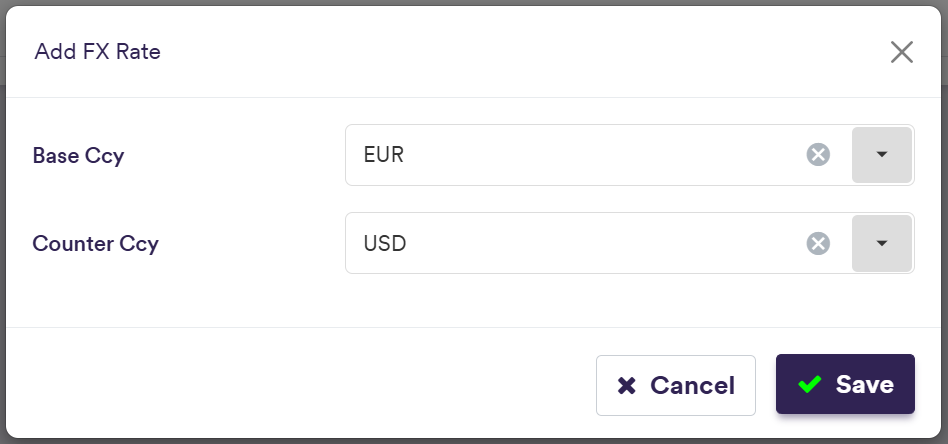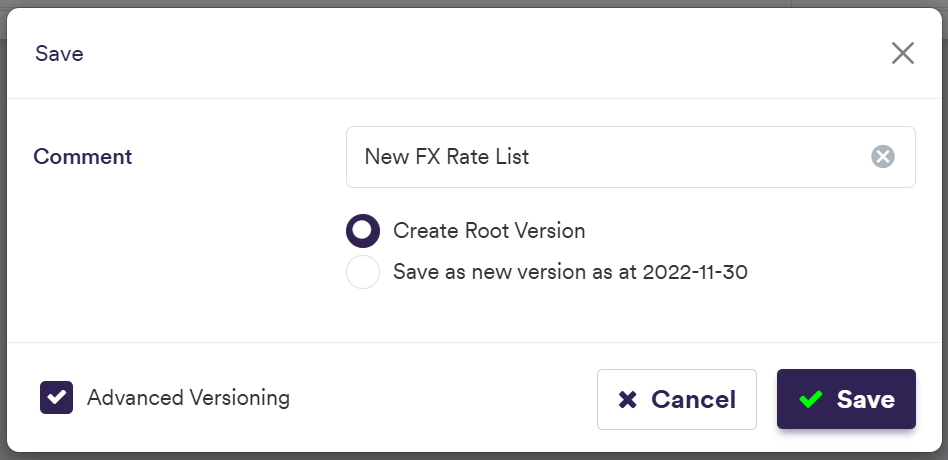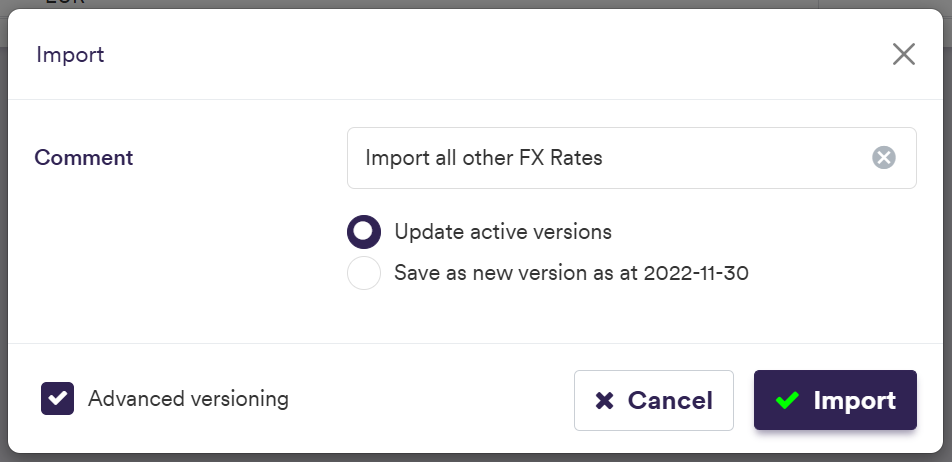Once you have created a curve group, you can add Spot FX rates to it.
On this page, we will discuss:
- how to add a Spot FX rate
- the market conventions used in Xplain for spot date calculations
Permissible currencies and currency pairs can be found on the FX Rates / Swaps Permissible Values page.
Part of our ‘NEW CURVE GROUP’ example that replicates the ‘LONDON’ curve group, this page will guide you through the process of adding a Spot FX rate using two examples: manually adding the ‘EUR/USD’ FX rate or importing all the data.
You can download the example *.CSV data import files here ![]() .
.
You can also add other types of curves and volatility surfaces to the curve group. Once all required items have been added, you can proceed to the curve configuration set up page.
Adding a Spot FX Rate
Under

To manually create an FX rate, click on




To import a list of FX Rates, click on (import) and select the relevant definition .CSV import file.
You can download the import file template here ![]() .
.


A description of an FX rate’s attributes and corresponding permissible values are set out in the table below.
| Field Name | Description | Permissible Values |
|---|---|---|
| Base Ccy | The FX rate’s base currency. 3-letter ISO 4217 currency code. | Any currency in FX Cat A and FX Cat B |
| Counter Ccy | The FX rate’s counter currency. 3-letter ISO 4217 currency code. | See FX Rate Rule |
Spot Date Calculation Rules
The market conventions used in Xplain for spot date calculation are as follows:
If USD is one of the currencies (except if other ccy is MXN, ARS or CLP)
T1 = T + 1BD based on Ccy calendar
Spot Date = T1 + 1BD based on Ccy calendar and US calendar
For USD vs. MXN/ARS/CLP or any other ccy pair excluding CAD/TRY/PHP/RUB
T1 = T+2BD for Ccy1 calendar (i.e. at least 2BD between trade date and settlement)
T2 = T+2BD for Ccy2 calendar (i.e. at least 2BD between trade date and settlement)
Spot Date = BusinessDay[ Max(T1, T2), all calendars including US, Following BDC ] (i.e. rolling forward until a good business day for all)
For USD/CAD, USD/TRY, USD/PHP and USD/RUB
Spot Date = T + 1BD based on Ccy calendar and US calendar
For CAD/TRY/PHP/RUB vs. CAD/TRY/PHP/RUB
T1 = T+1BD for Ccy1 calendar (i.e. at least 1BD between trade date and settlement)
T2 = T+1BD for Ccy2 calendar (i.e. at least 1BD between trade date and settlement)
Spot Date = BusinessDay[ Max(T1, T2), all calendars including US, Following BDC ] (i.e. rolling forward until a good business day for all)
Once all required rates have been added, you can proceed to the curve configuration set up page.
